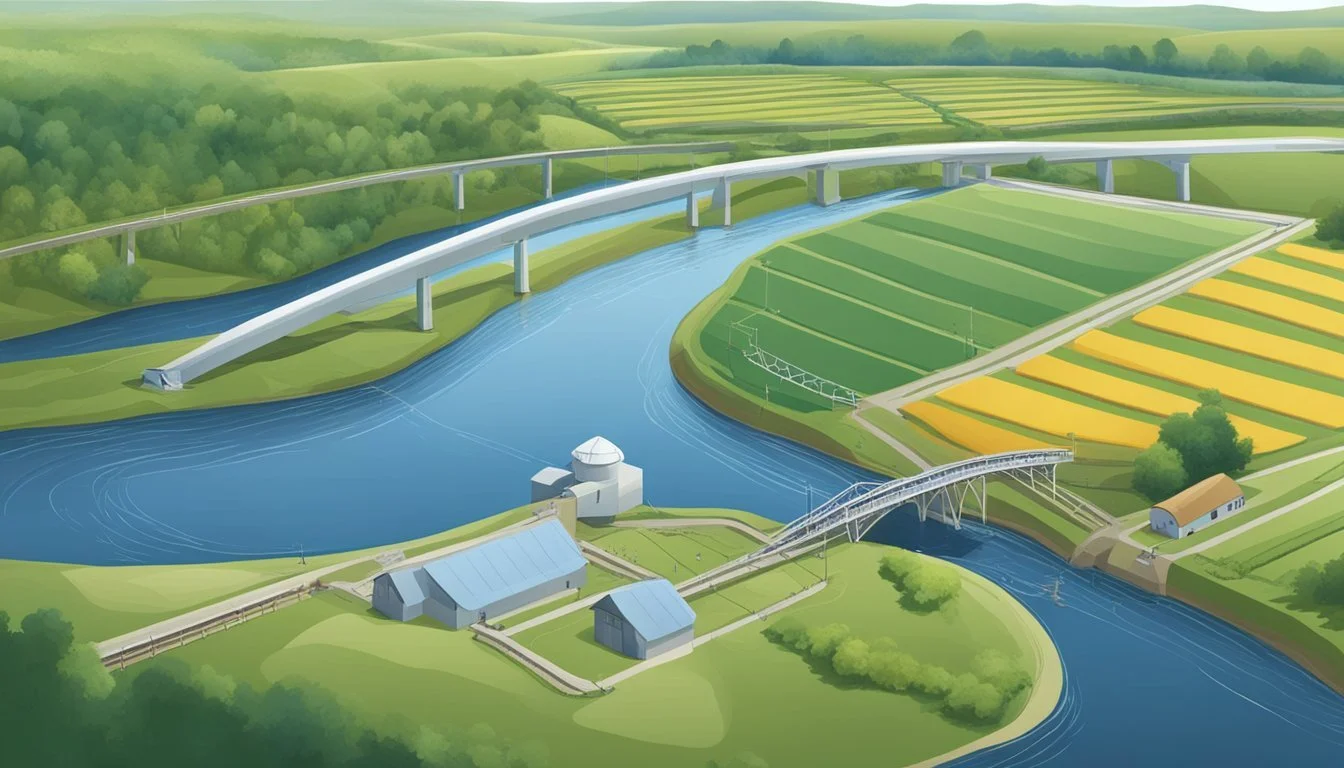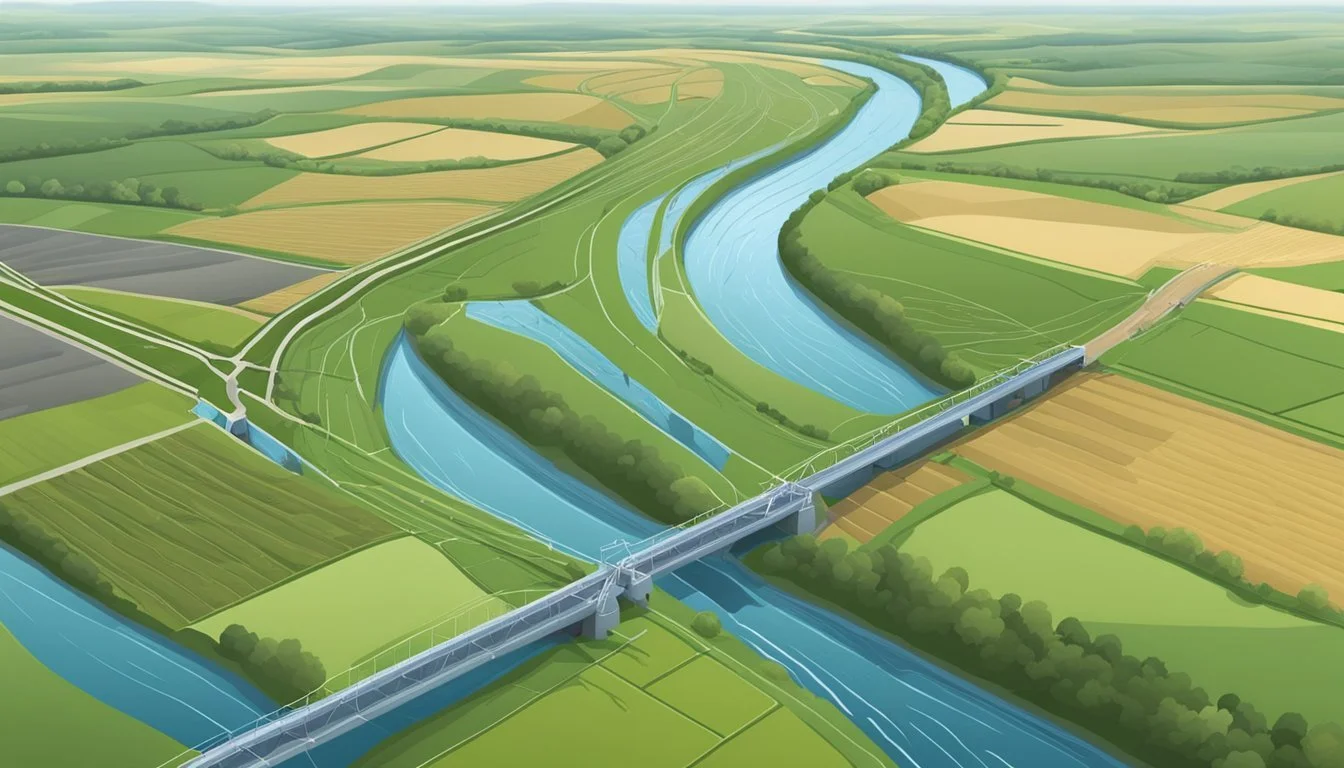Water Rights in Kentucky
Navigating Legality and Usage
Water rights in Kentucky are governed by a complex legal framework that balances common law doctrines with statutory regulations. The state recognizes the riparian doctrine, which grants water usage rights to the landowners whose properties abut a watercourse. These rights are inherently tied to the land and allow for reasonable use, ensuring that one riparian owner's utilization does not unreasonably interfere with others' access to the water. This system of water allocation has evolved to accommodate the changing societal needs and environmental considerations within the region.
In addition to the riparian rights, Kentucky has implemented a statutory water withdrawal permitting system. This system was designed to bring more clarity and fairness in water usage, especially during times of scarcity. Permits are often necessary for withdrawals exceeding certain thresholds, ensuring that water resources are distributed equitably and sustainably among users. The interplay between common law and statutory law in Kentucky's water rights is a subject of ongoing discussion and analysis, as highlighted in the University of Kentucky's proposed revision of water rights legislation.
Ensuring access to clean and reliable water remains a vital issue in Kentucky. Recent initiatives and funding aim to address the challenges in the water infrastructure and supply, as acknowledged in reports regarding the monetary impact on reliable clean water in Kentucky. These efforts underscore the essential nature of water as a resource and the need to protect and manage it with foresight and responsibility.
Historical Overview of Water Rights in Kentucky
In the Commonwealth of Kentucky, the journey of establishing water rights has been intricately woven with its legal history. Initially, water rights were governed by riparian doctrine—a common-law principle which grants usage rights to landowners whose property abuts a watercourse.
Riparian Rights:
Access: Riparian landowners enjoy equal rights to reasonable water use.
Shared usage: Utilization is shared among landowners without diminishing water quality or supply for others.
Over time, these riparian rights have confronted challenges, particularly during periods of water scarcity. To address this, Kentucky superimposed a statutory water withdrawal permit system to manage and allocate water resources more systematically.
Statutory Permits:
Designed to work alongside common-law doctrines.
Allocation: Permits regulate water usage, especially in times of shortage.
Certainty: They offer clarity and predictability to water users.
The dynamic between statutory law and riparian rights has undoubtedly evolved. Recent attempts at revising Kentucky's water rights legislation highlight efforts to refine water governance, emphasizing administrative structures and the efficacy of water withdrawal permits—all underscored by a need to balance common-law traditions with modern water demands. The Commonwealth's commitment to reform suggests a future where both legal clarity and resource sustainability are paramount.
Legal Framework for Water Rights
The legal landscape governing water rights in Kentucky combines both federal oversight and state-specific statutes that directly affect how water resources are managed. This intricate framework shapes the rights and responsibilities of water users throughout the state.
Federal Laws and Regulations
The backbone of water legislation in the United States includes the Clean Water Act (CWA), which sets the stage for protecting water quality across the nation. Regulations under the CWA establish the necessary standards for discharges of pollutants and demand states to adhere to guidelines that support these federal objectives. In Kentucky, entities must obtain appropriate permits before discharging any pollutants into waters, ensuring compliance with both federal and state regulations.
State-Specific Provisions
Kentucky operates under a permit-based system that governs water withdrawals, tailoring its approach to manage the interplay between statutory law and common-law doctrines. State provisions specify the process through which individuals and entities may be granted water usage rights, especially during periods of scarcity. This system addresses the allocation of water in times of shortage, influenced by aspects like existing usage rights and priority dates.
Key Definitions and Concepts
Understanding Kentucky’s water rights necessitates familiarization with its foundational terms. A water right is essentially the authorized usage of water for a beneficial purpose, as conferred by law—either through ownership of land adjoining a watercourse or through administrative authorization. Appropriation is a central concept entailing the diversion and use of water for beneficial uses, with "first in time, first in right" often guiding the priority among competing uses.
The precise regulations and interpretations are complex, with documents like A Proposed Revision of Kentucky's Water Rights Legislation seeking to clarify ambiguities inherent in Kentucky's legal structure. Within this framework, definitions and concepts serve as guides for legal interpretation and implementation, ensuring users understand the extent and limits of their water rights.
Water Management Authorities
In Kentucky, water rights and regulatory enforcement involve multiple entities, each playing a decisive role in ensuring water resources are used and managed sustainably and legally.
Environmental Protection Agency (EPA)
The EPA is a federal agency pivotal to regulating water quality and pollution controls across the United States, including Kentucky. Its regulations and oversight extend to enforcing the Clean Water Act, which impacts how states like Kentucky manage their water resources. The EPA works closely with state agencies to ensure that water standards are met and maintained for health and environmental protection. Their guidelines directly affect how water is allocated and used throughout the state.
Kentucky Division of Water
The Kentucky Division of Water (DOW) is the principal state authority regulating water use, distribution, and quality. It operates under the Kentucky Energy and Environment Cabinet, formulating water policy and administering regulations related to water resources in the state. This department issues permits for water withdrawals and enforces compliance with state and federal water laws, ensuring residents and businesses adhere to the sustainable management of Kentucky's water resources.
U.S. Army Corps of Engineers
They are instrumental in managing Kentucky's water resources, particularly when it comes to navigable waters and the construction and maintenance of water-related infrastructure projects. The Corps of Engineers undertakes critical tasks such as flood risk management, navigation support, and overseeing water resource development projects. Their control of dams and reservoirs plays a significant role in water supply and conservation efforts within the state.
Surface Water Rights
In Kentucky, surface water rights govern the usage and management of water from sources such as streams and lakes. These rights are essential for balancing the needs of different water users and for protecting the state's water resources.
Allocation of Surface Water
Kentucky follows a doctrine of reasonable use for the allocation of surface water. This framework allows individuals to use surface waters for purposes such as irrigation, provided the use does not harm other legal users. The Kentucky Water Research Institute sheds light on the complexity of such legal allocations, ensuring equitable distribution in the region.
Rights to Access Streams and Rivers
Individuals living adjacent to streams and rivers generally have the right to access and use the water provided it does not infringe upon the rights of downstream users. These are known as riparian rights, which allow landowners reasonable use of water as it flows through or alongside their property.
Water Quality Standards
The state enforces water quality standards to maintain the health of surface waters in Kentucky. According to the Regulations and Standards Division of Water - Kentucky, these standards maintain the ecological integrity of water bodies, protecting them from pollution and ensuring they are safe for recreational and consumptive uses.
Impact of Dams and Reservoirs
The construction and operation of dams and reservoirs play a significant role in the management of Kentucky's surface waters. They provide benefits such as water supply and flood control but must be managed to prevent adverse effects on water availability and ecosystem health.
Use of Fill Material
The use of fill material in waterways, which can impact flow and water quality, is regulated under state and federal laws. Alterations to stream channels, banks, or shorelines typically require permits to ensure that any changes do not negatively affect the environment or infringe upon the rights of other water users.
Groundwater Rights and Regulations
In Kentucky, water rights and regulations are critically oriented towards the sustainability and safety of groundwater resources. The governance is structured to balance the needs of the population with those of industrial entities, ensuring both access and protection.
Groundwater Extraction Permits
Kentucky mandates the acquisition of permits for groundwater extraction to manage the resource efficiently and maintain environmental balance. Entities must comply with the Kentucky Division of Water regulations, which oversee well drilling and enforce guidelines to prevent unnecessary depletion and contamination.
Safeguarding Drinking Water
The state places a high priority on protecting drinking water quality. A fundamental part of this protection involves the Groundwater Protection Plan (GPP), which sets out strategic measures to prevent pollutants from compromising groundwater, which is vital for public health. Details of these efforts are available through the Environmental Protection water resources.
Coal Companies' Influence on Water Supply
Coal companies have historically been significant players in Kentucky's economy, but their activities impact the water supply, necessitating stringent regulatory measures. They are required to abide by comprehensive standards that mitigate the risk of water supply contamination, including maintaining a safe distance between coal extraction sites and water sources, as per Kentucky regulations.
Water Conflicts and Disputes
Water rights issues in Kentucky often involve complex interactions between legal doctrines, government policies, and the interests of various stakeholders. These disputes can range from interstate conflicts to enforcement of water rights and sometimes lead to legal actions.
Interstate Water Conflicts
Interstate disputes over water rights and usage have become more prominent, given the shared water resources between Kentucky and neighboring states such as Virginia. An example of such litigation is the allocation of water from rivers that cross state boundaries, raising questions about apportionment and rights to water usage.
Water Rights Enforcement
Enforcing water rights within Kentucky involves a statutory withdrawal permit system that overlays a body of common-law rights. This framework can lead to ambiguity, particularly during times of scarcity, and may prompt the need for revisions in the legislation to more clearly define the rights of water users. Enforcement becomes challenging when determining who has the right to use navigable waters, which are traditionally deemed public resources.
Case Studies of Water-Related Arrests
Instances where individuals have been arrested for water-related offenses often involve the unauthorized use or diversion of water, sometimes from navigable waters crucial for the state's ecology and economy. These case studies highlight tension points within Kentucky's approach to managing its water resources and help to identify areas where legal frameworks and enforcement may need strengthening. When Kentuckians are involved in these legal disputes, they serve as precedents and can cause ripple effects in how water rights are interpreted and enforced.
Flood Control and Management
In Kentucky, flood control and management is a crucial aspect of water rights, considering that flooding is the state's most prevalent natural disaster. The Kentucky Floodplain Administrator Handbook provides a critical resource for local officials, detailing comprehensive floodplain management practices. It emphasizes the importance of enforcing floodplain development standards and the role of permitting in mitigating flood risks.
Local officials are guided by floodplain management ordinances to ensure that construction and development within flood-prone areas comply with state regulations. These regulations aim to protect buildings from flood damage by requiring a floodplain permit before any construction or significant renovations take place.
Education
Public awareness programs are essential to inform residents about flood risks and safety measures.
Permitting
Strict permitting processes ensure that any development within floodplains adheres to safety norms.
Enforcement
Regulations are only as good as their enforcement; non-compliant structures are subject to penalties.
Kentucky's approach emphasizes the collective responsibility of communities and governmental bodies to limit damage through sound planning. The Division of Water and the Kentucky Association of Mitigation Managers offer resources like the Guidance for Floodplain Managers to support local floodplain managers by updating them on the latest National Flood Insurance Program (NFIP) requirements, permit necessities, and inspection procedures after disaster events.
Ultimately, Kentucky's comprehensive strategy for flood control and management aims to reduce the vulnerability of communities to the impacts of flooding through effective policy implementation and community involvement.
Frequently Asked Questions
Navigating water rights in Kentucky involves understanding various regulations and guidelines that are crucial for maintaining both legal compliance and environmental stewardship.
How is navigability determined for waterways in Kentucky?
In Kentucky, the determination of navigability for waterways is based on their historical and present-day use for commercial trade or travel. A waterway deemed navigable falls under public domain and is subject to specific use rights and environmental protections.
What are the requirements for obtaining a water permit from the Kentucky Division of Water?
To obtain a water permit in Kentucky, one must submit an application to the Kentucky Division of Water, detailing the intended use and withdrawal amounts. Compliance with the Clean Water Act and state water quality standards is mandatory.
Under what conditions might a stormwater permit be required in Kentucky?
In Kentucky, a stormwater permit is required when construction activities disturb one acre or more of land, or if the activity is part of a larger common plan of development or sale, to ensure that runoff is properly managed and does not negatively impact water quality.
What are the legal considerations for constructing a dam on a creek within Kentucky?
Constructing a dam in Kentucky involves securing a permit, demonstrating compliance with safety standards, and ensuring no adverse impact on stream flow, aquatic life, or downstream water rights.
What laws govern the public's right to access and walk in creek beds in Kentucky?
Public access and use of creek beds in Kentucky are governed by state laws, which allow public use of waterways considered navigable, whereas non-navigable waterways may fall under private property rights, restricting access and use.
What constitutes legal use of greywater under Kentucky state regulations?
Legal use of greywater in Kentucky is defined by regulations that prioritize health and environmental safety. Greywater must be treated and disposed of in an approved manner that prevents contamination of potable water sources and adheres to public health standards.








